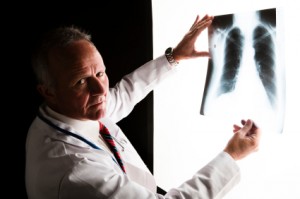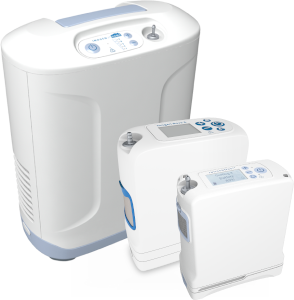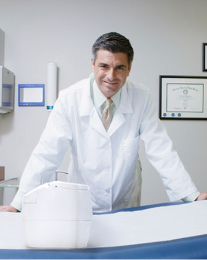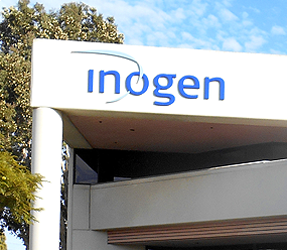
If you have just found out that you have a lung disease of some kind, and that your ability to breathe is limited or impaired in some way, you probably have a lot of questions. Whether you knew this was coming or not, your diagnosis has likely introduced you to some new vocabulary and information from your doctor. As with any medical condition, it can be very confusing at first. However, it is important to fully understand your diagnosis, the types of lung disease you have been diagnosed with and what you need to do to begin treating your particular disease.
Checklist for the Newly Diagnosed
- See a specialist
Your doctor may recommend you see a specialist. A specialist, like a pulmonologist, will have additional expertise in treating lung diseases like yours.[1]
- Get as much information as possible
Read everything you can find about your disease. Figure out how your lung disease will affect your life, your job and your family. Look into all the treatment options that are out there, and understand what is involved with each before choosing one (or more) with your doctor.
Take comfort in the fact that you are not alone. More than 35 million Americans are living with different types of lung disease right now. As frightening as your diagnosis can feel, living with lung disease may not require you to stop doing the things you love. While very serious and usually chronic, you may be able to lead a full and active life with lung disease if you approach your treatment in a positive way, and make the necessary changes to your lifestyle. Treatments like oxygen therapy may require some adjustments at first.
Here is some information about obstructive lung disease and restrictive lung disease[2], and what each diagnosis can mean for you and your life.
Two categories of lung disease: Obstructive vs Restrictive Lung Disease
One of the first steps in diagnosing lung diseases is differentiating between obstructive lung disease and restrictive lung disease. While both types can cause shortness of breath, obstructive lung diseases, such as asthma and chronic obstructive pulmonary disorder (COPD), cause more difficulty with exhaling air, while restrictive lung diseases (such as pulmonary fibrosis) can cause problems by restricting a person’s ability to inhale air.2 Common symptoms of both obstructive and restrictive lung disease include: difficulty breathing, shallow breaths, coughing, and shortness of breath.[2]
Obstructive lung disease
Obstructive lung diseases make it harder for you to exhale air. Just like it sounds, people with obstructive lung disease have a blockage or obstruction in their airways which causes them to breathe air out with slow and shallow breaths. This obstruction occurs when your inflammation and swelling narrow your airways. Obstructive lung diseases include Chronic Obstructive Pulmonary Disease (COPD), which includes emphysema, chronic bronchitis and asthma.[2]
Symptoms of obstructive lung diseases can vary depending on the specific condition and the severity. In addition to common symptoms of lung disease, patient with obstructive lung diseases may also present with: a feeling of fullness in the lungs, wheezing, spitting or coughing up mucus. In addition, their symptoms tend to get worse with activity.[2]
Restrictive lung disease
Restrictive lung disease, on the other hand, makes it hard to inhale enough air to fill your lungs. This involves a reduced lung capacity so that the lungs are filled less during inhalation than they would normally and can occur for a few different reasons. Sometimes, your lungs themselves become restricted by an illness such as pneumonia, pulmonary fibrosis, tuberculosis, sarcoidosis or adult respiratory distress syndrome (ARDS). This is called an intrinsic restrictive lung disease. In other cases, injuries or conditions of surrounding parts of your body make it difficult to breathe fully. For instance, a fractured rib can disrupt your normal breathing. This type of restrictive lung disease is called an extrinsic restrictive lung disease. Other conditions that can increase your risk of extrinsic restrictive lung diseases include: obesity, scoliosis, tumors, ascites and pleurisy. Conditions that impact your nervous system, such as muscular dystrophy, myasthenia gravis, Guillain-Barré syndrome, or amyotrophic lateral sclerosis (ALS) can also make it hard for your body to make the movements needed to take full breaths. This is known as a neurological restrictive condition.[2]
The exact symptoms of a restrictive lung disease depend on type of restrictive lung disease, the condition itself and the severity. For instance, people with extrinsic restrictive lung diseases might frequently change positions to make breathing easier. In addition to the common symptoms of lung disease, patients with restrictive lung diseases may experience: a feeling of not being able to get enough air and anxiety or panic related to breathing difficulties.[2]
Treatment Options[2]
Once diagnosed, while obstructive and restrictive lung diseases have similarities, they have different treatments and outlooks.
With obstructive lung diseases such as COPD and asthma, medications that dilate the airways (bronchodilators) can reduce symptoms. Inhaled or oral steroids are also frequently used to reduce inflammation.
Treatment options for restrictive lung diseases focus on treatment of the underlying cause, and until recently treatments have been limited. Supportive treatment can be helpful for both types of lung diseases and may include supplemental oxygen, noninvasive ventilation (such as CPAP or BiPAP), or mechanical ventilation. Pulmonary rehabilitation may be beneficial for people who have COPD or who have had lung cancer surgery. When severe, lung transplantation is also sometimes an option.
If supplemental oxygen has been prescribed to help manage with either obstructive or restrictive lung disease, Inogen can help. Inogen One portable oxygen concentrators are small, lightweight and quiet. They are designed for active patients who enjoy travel. Contact Inogen today and experience peace of mind with an Inogen ONE portable oxygen concentrator.









